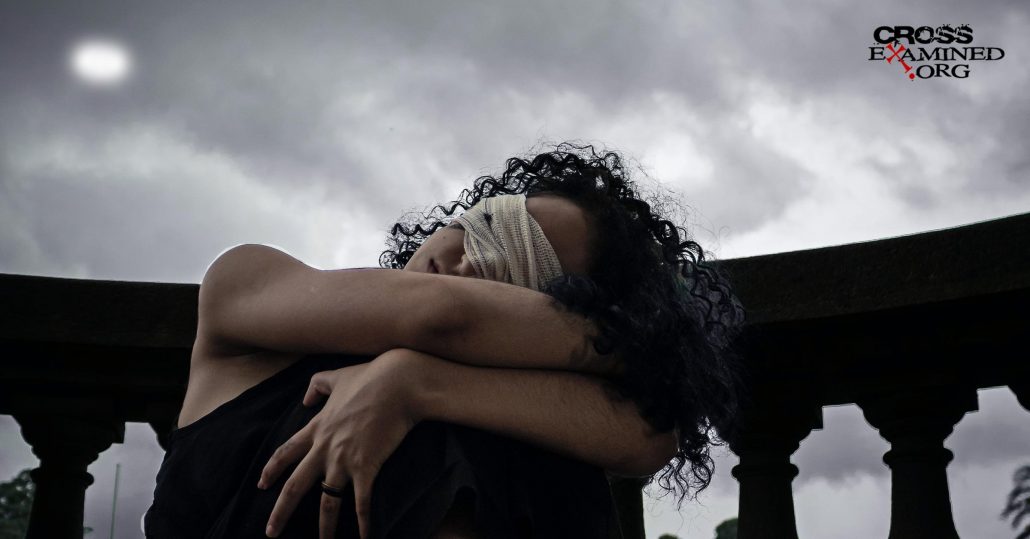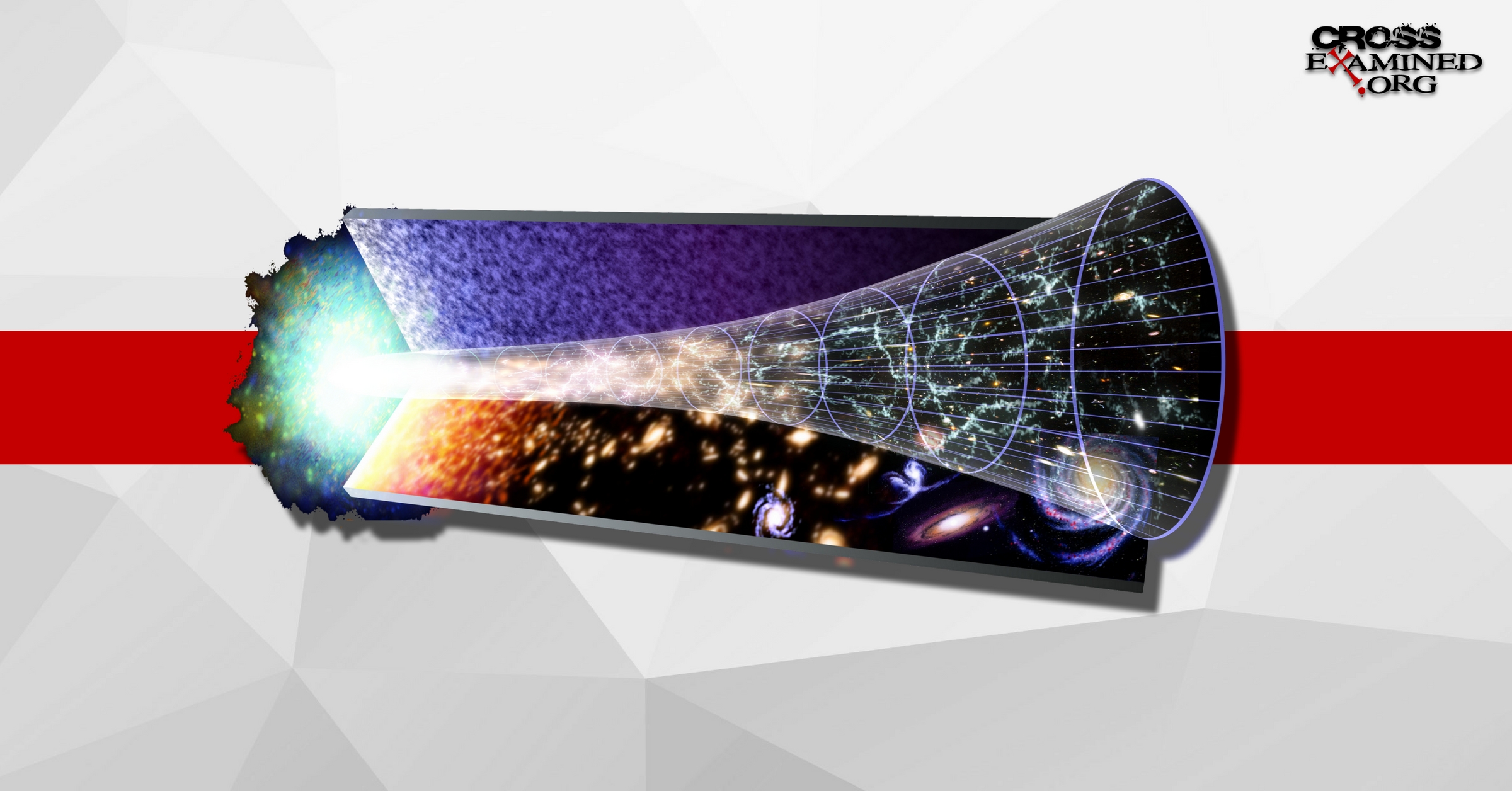You Gotta Be More Specific
A blogger named MarkCC demonstrates a few common misunderstandings regarding Intelligent Design (ID).
First, we need to clarify some terms, as there is some jargon given in the post that the reader may not be familiar with.
Specified Event – The phrase “Go Take Out the Trash” is a specified arrangement of letters. The jumbled letter sequence “smets qwoand nduams iba” is not specified, as it is not a pattern that is recognizable. How this relates to the ID is that if you come to the dining room table and see some Alpha-Bits arranged in the first sequence (even if not perfectly straight), you’d assume that your housemate purposely arranged them as communication to someone else, quite possibly you. That would be a specified event. But if you saw the second sequence not perfectly straight, you would be pretty likely to assume that your housemate carelessly spilled some out of the box and didn’t bother to clean it up. That would be non-specified. And applying this to the origin of life, there are many features of life (like DNA and proteins), that exhibit sequences of code that are specific. For example, the work of MIT molecular biologist Robert Sauer came to the conclusion that for a protein chain that was 92 amino acids long, only 1 in 10^63 could perform some function in cellular life.[1] So language and proteins are pretty similar in that letters/amino acids form chains of readable sentences/working proteins.
Universal Probability Bound – What if we could spill some Alpha-Bits every second? Wouldn’t we eventually get the phrase regarding the trash? Well, if we were able to spill exactly the same amount, and the odds of a space appearing as often as a letter was equal, it would happen about once every 1.14 Octillion years.[2] So even if I live to be 100, it’s absurd to think I would ever achieve that sequence by randomly spilling Alpha-Bits. I’d have an astronomically far greater chance of winning the lottery. There are only so many “rolls of the dice,” in such cases. So, in other words, beyond a certain point, we have to rule out blind luck as an explanation and attribute an improbable event to design guided by some intelligence. That would be the “Universal Probability Bound.” Dembski suggests that this should be any odds around 1 in 10^150. This is what he calls the number of “probabilistic resources.” This is based on the number of possible events in the universe. And when he says “events,” he’s using the most minimal definition possible. It is the maximum number of times that all the elementary particles in the universe could have reacted with energy!
Now on to the post –
“Here’s the fundamental dishonesty: None of those numbers have *anything* to do with what he’s supposedly trying to prove. He’s trying to create a formal-sounding version of the big-number problem by throwing together a bunch of fancy-sounding numbers, multiplying them together, and claiming that they somehow suddenly have meaning. But they don’t. It’s actually remarkably easy to show what utter nonsense this is. I’ll do a fancy one first, and a trivial one second.”
Rather, MarkCC has not understood Dembski’s argument. As the second example is easier to understand, we’ll start with that one.
“Grab two decks of distinguishable cards. Shuffle them together, and lay them out for a game of spider solitaire. What’s the probability of that particular lay of cards? 104! , or, very roughly, something larger than 1×10166. Is god personally arranging my cards every time I play spider? Anyone who’s ever taken any class on probability *knows* this stuff.”
The blogger has missed Dembski’s point. Yes, the odds of ANY one sequence with two decks of cards is 1 in 10^166, but what Dembski is looking for is a SPECIFIC sequence. To put it another way, what MarkCC must do to falsify Dembski’s point is either to 1) Predict a specific sequence of 104 cards or 2) Shuffle the cards randomly twice, and get them in the same sequence each time. The odds of that happening are indeed 1 in 10^166, but the percent chance of getting another result is 99.9999999999%, carried out to 164 decimal places. In other words, a non-specific sequence is virtually certain, and a specific one is virtually impossible.
One commenter named Corkscrew notes this, but then goes on to say,
“Of course, this presents two further problems. Firstly, as you’ve mentioned before, the whole concept of specification is complete bollocks. AFAICT it basically boils down to how cool something looks – if it makes Dembski go “whoa…” it’s specified.”
This is actually kind of humorous, as this very statement is itself an example of a specification. I don’t say that because it made me go “Whoa,” but because it’s recognizable as an English sentence. What would Corkscrew think if I said “I can’t tell if a person actually wrote this. Perhaps they’re just random letters generated by a computer”? And as we noted before, written sentences are a valid analogy to the coding required in DNA and proteins.
“Secondly, the whole concept of probabilistic resources is completely borked. It assumes a discrete universe. We do not live in a discrete universe. It assumes that every configuration has effectively the same chance of appearing. This is blatant bull.”
This is true enough – but that is only relevant if the bases that make DNA and the amino acids that makeup proteins are significantly (to an astronomical degree) more likely to group together in ways that make them actually function than not. Corkscrew does not provide any evidence that this is the case. And as we shall see that, in fact, Dembski’s estimation of probabilistic resources available to get life from non-life is far too generous.
Now, let’s move onto his “fancy” example –
“Let’s create an incredibly simplified model of a region of space. Let’s say we have a cube of space, 1 kilometer on a side. Further, let’s suppose that this space contains 1000 particles, and they are all electrons. And further, let’s suppose that each 1mm cube in this cubic kilometer can only have one electron in it.”
He goes on to calculate the number of possible configurations of these particles as 10^5232, way more than Dembski’s probability bound. He asks,
“So what Dembski is saying is that *every* possible configuration of matter in space in the entire universe is impossible without intelligent intervention.”
That isn’t at all what Dembski is saying. In fact, this moves us on to the next point of the ID argument. The number of possible combinations greatly outweigh the possible number of trials. As it relates to life forms, the late astronomer Fred Hoyle calculated that there are 10^40,000 amino acid combinations for the complete set of 2,000 actual known enzyme proteins that exist [3]– and this is just one of many features of life that need to appear. It isn’t that God is necessary to arrange any possible sequence of these amino acids. The problem is there are only 10^150 possible events. If each event was a complete trial arranging different combinations of amino acids, we still wouldn’t come close to finding the very few specific sequences that can form life.
But it’s actually much worse than that for three reasons –
1) Each event is only what one elementary particle does with energy. When molecules form, quite a few particles are involved – and each one would consume at least one event, reducing the number of available trials to form life.
2) In reality, no one believes that a cell or group of proteins came together all at once, but that these things formed via a step-by-step process. But a step-by-step process would take many events. This would also reduce the number of trials.
3) There are plenty of environments, such as the air that you are breathing, or the sun, that are not at all conducive to forming any of the building blocks of life. This reduces the number of trials even further.
Once these misunderstandings have been cleared up, Dembski’s argument stands.
Notes
[1] Meyer, Steven. Darwin’s Doubt, p. 180
[2] The calculation is 27 ^21 = 1.14 * 10^30.
[3] “Hoyle on Evolution” Nature, Nov. 12, 1981 p.105
Brent Hardaway is a Financial Analyst living in the Tampa, FL area. Originally from Northern CA, he has a B.S. in Accounting from San Diego State University and a Certificate in Christian Apologetics from Biola University. He is an avid baseball and football fan, and enjoys reading and playing golf in his spare time.
Original Blog Source: http://bit.ly/2NzlYHx












Leave a Reply
Want to join the discussion?Feel free to contribute!